Prime Minister Narendra Modi’s address to the nation on 12th May, 2020 was widely anticipated as people wanted to know if the lockdown will be extended anymore. But this address marked an important moment in history of India with Prime Minister announcing the idea of Atmanirbhar Bharat or Self-Reliant India with a Rs. 20 lakh crores or approximately $265 billion package to ensure this.
In my last piece for this portal, I had argued that Covid19 can be an opportunity in disguise for India. I had identified its role in increasing India’s economic might and how can this further lead to realization of India’s geopolitical ambitions. This article argues that PM’s articulation of this vision of a self-reliant Bharat is a good use of the pandemic as an opportunity to initiate many long-pending reforms.
There was a long-standing demand from the government to declare a fiscal stimulus or relief due to the adverse economic impact of COVID-19. What made Prime Minister Modi ‘s address truly historical was his emphasis on making 21st century India a reality and a responsibility of one 1.3 billion Indians. In his speech, he outlined five pillars of a self-reliant India that include economy, infrastructure, system, demography and demand.
According to the Prime Minister economy must undergo a quantum change and not an incremental change. This was after a long time that an Indian Prime Minister was referring to economic reforms in sectors such as land labour liquidity and law since the big bang reforms of 1990s.
The Economic package announced by India to the tune of 10% of its GDP reminded many of us of the fiscal stimulus given by China in 2008 during the great recession. In a sense, Covid became India’s 2008 moment by providing it a chance to bring impending reforms. While the lesson from the 2008 great recession was that never depend on one country, one region, one product and one customer for demand, lesson from Covid crisis is don’t be overly dependent on globalization. There is a thrust on domestic demand and manufacturing as the world is realizing the fallacy of integrating China into its value-chains.
In 2007, China’s GDP was $3.57 trillion in comparison to India’s GDP in 2019 is $3.2 trillion. In 2020, India is exactly where China was 12 years ago in 2008. Even before the Covid19 crisis, 21st century was already being hailed as the Indian century. During a visit to India in early 2020, Amazon CEO Jeff Bezos invested $1 billion in digitizing Indian small & medium businesses and promised $10 billion export for them by 2025 using Amazon’s global footprint, all the while hailing the 21st century as an Indian century.
Covid19 crisis has come at a time when India is already dealing with challenges such as increasing protectionism in the western world and need to attract companies fleeing from China to its shores. Similarly, job creation was also a big challenge for Modi government. The migrant crisis during the lockdown also led to introspection within the states as well. States such as Uttar Pradesh have even resolved to not send its labourers as migrants to other states.
In such a scenario, Prime Minister’s vision to create an Atmanirbhar Bharat outlined the need to spur domestic economic activity so that India’s dependence on import comes down as well as export of Made in India products gets a significant boost. The idea is not the good old swadeshi movement or inwards looking economy which meant boycott of foreign products, import quotas and license raj but a need to attract foreign capital to India so that they make in India. In continuation of Modi’s speech on 12th May, 2020, Finance Minister Nirmala Sitharaman outlined the exact details of the 20 lakh crores package over a series of five press conferences.
The first press conference focused on government’s commitment to ease liquidity in the market by becoming guarantor of an elaborate loan programme to the MSME sector battling for its survival and also to the non-banking finance sector. While the critics are arguing that the numbers are too small to translate into any meaningful to change on the ground, it seems government is only signalling to the MSME and their lenders that government is willing to back stop the commitment of lenders and borrowers.
The second tranche of announcements by Finance Minister focussed on migrant workers, street vendors, urban poors and small farmers. With regards to reforms, she announced the decision to rationalise labour codes where 44 labour laws are to be harmonized into four broad codes and a bill will be tabled in the parliament soon to this effect. This was necessary to support the state government’s efforts to reform labour laws because without centre’s rationalisation of labour codes, many of these reforms would have been declared unconstitutional.
In the third tranche of her announcement, Finance Minister ended license raj in agriculture through three key reforms- amendment in the essential commodities act thus removing restrictions from stocking of agri produce, cracking down on the corrupt Agricultural Produce Marketing Committee system which prevents farmers from selling their produce to buyers of their choice and encouraging role of the private sector in agriculture by introducing a new law for contract farming.
In the fourth tranche of announcements, Finance Minister further liberalized the coal and mineral sector. Significant reforms announced by her included increase in FDI limit in defence manufacturing from 49% to 74%. She also announced a decision to free up airspace for civilian use from the current 60% which will bring fuel bill down for many airlines which are currently forced to take a longer route. She also announced that start-ups in atomic energy sector will now be encouraged and so would the participation of private sector in space activities.
The highlight of the fifth and final tranche of her announcements includes an increase in borrowing limits of states from 3% to 5% of the GDP. However, the thrust of the Modi government on reforms can’t be missed here as the extended borrowing is conditional on specific reforms enacted by the states. She also announced allocation of an additional Rs. 40,000 crores to MNREGA scheme. In addition to this, she announced a new public-sector policy where Public Sector Enterprises (PSEs) in non-strategic sectors will be privatized and strategic sectors will also be opened for private players with requirement of at least one private sector enterprise.
The announcement by the Prime Minister on 12th May of his vision of an Atmanirbhar or Self-reliant Bharat is now contingent on how effectively the government is able to execute the reforms that have been announced over the course of 5 days. Meanwhile, critics are not satisfied with the Covid relief as announced by the government. However, announcement of certain reforms that were long pending has been an opportune gift by Covid19 pandemic.
About the Author

Monica is a PhD Candidate at Department of International Relations, South Asian University where she is assessing the political economy of regional integration in South Asia. She tweets at: @trulymonica
Keywords: Covid19, India, Geopolitical, Economic impact, China

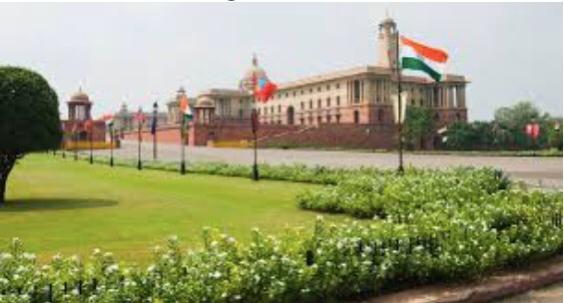




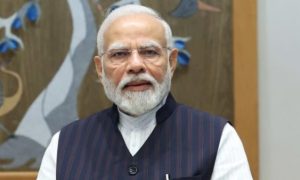







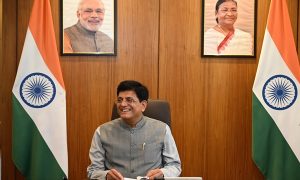







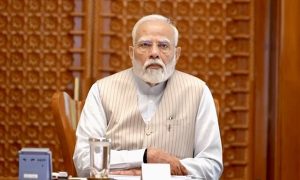

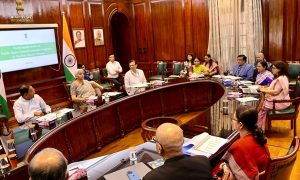



 WhatsApp us
WhatsApp us